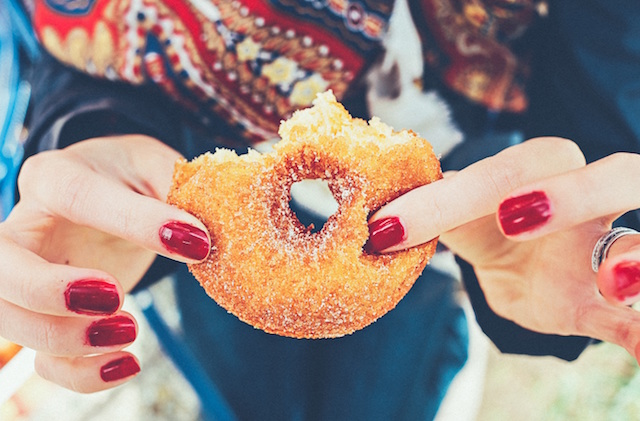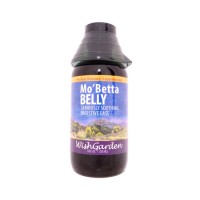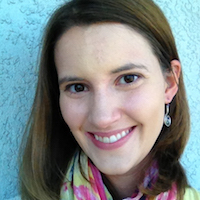Heartburn, indigestion, constipation, diarrhea, and headaches.
Looking back on it now, it’s hard for me to imagine that that’s what my life was like just two years ago—having low energy and trouble sleeping each night because either the heartburn or indigestion I was having was so uncomfortable.
While I don’t think we ever get to a point where we are completely “healed” in that we’re able to go back to the old lifestyle we had before we started our healing journey, I have managed to reach a stable place.
In order to reach this stable place in my gut health, I had a lot of different lessons to learn—not only from health professionals who supported me in this journey, but also from tuning in to my own body and recognizing what it wants and needs.
Here are six lessons I’ve learned in my journey of healing my gut:
1. Cutting out dairy and gluten alone may not to do magic, but it’s still worth doing.
When my gut problems first started getting unmanageable, I had several people in my life come chiming in about how they started cutting out gluten and dairy from their diets and they were able to get rid of their heartburn, stop having acne breakouts, started feeling more energized, and so on.
So I started cutting out gluten and dairy from my diet for a few weeks—and eventually even a few months—and I didn’t notice any results at the time. I found myself frustrated and as if all my efforts to cut out these foods was a waste of time.
I didn’t realize it then, but I know now that while cutting out dairy and gluten can be beneficial, it may not be the only thing that our bodies need to heal. Maybe you’d also need to cut out sugar or soy and eat more vegetables and less meat. It varies a lot depending on the individual.
2. Gluten is in a lot of processed foods.
In the first week or two that I started cutting out gluten, I remember telling a friend who had suggested I eliminate gluten from my diet, “I’ve been doing it for two weeks and I’ve noticed no changes!”
He sat there and looked at me with a straight face and asked,
“Have you been eating soy sauce?”
“Yes,” I replied.
“Have you been eating salad dressings?”
“Yes.”
“What about sauces?”
“Well, yeah.”
“Then you haven’t been cutting out gluten.”
It took me some time to do the research online and read all the labels at the grocery store, but eventually I figured out what to look for on the labels and get a sense for what products are typically going to have gluten in it and which aren’t.
Fortunately for me, I’m not celiac, so I don’t have to be extra cautious about contamination or anything like that. However, if you’re doing an elimination diet to see what foods work for you and which don’t, you have to know if you’re consuming even the tiniest bits of what you’re trying to eliminate.
3. Ditch the gluten-free products.
In my experience of trial and error, I’ve realized that consuming gluten-free products are just has bad as consuming glutenous products. Why? Because they’re still processed.
When I started eating mostly whole, natural foods by buying most all my food from the perimeter of the grocery store, that’s when I started to really notice shifts in my gut and overall health.
4. We need to rotate our probiotics and enzymes.
After about nine months of working with my acupuncturist, I noticed my digestion was feeling a bit sluggish. When I informed my acupuncturist of this, she immediately asked me,
“How long have you been using your current probiotic?”
“Probably 6 months,” I said.
“You should probably change it,” she responded.
I rotate between three different brands of probiotics and rotate different kinds of enzymes. Sometimes our bodies get used to the same formula, and all it needs is something different to give it a little boost.
5. We need to be open to changing our diets as needed.
When I was first introduced to the paleo diet through my boyfriend and his sister, I thought it was the magical life-changing diet that I had been looking for all along. Whenever I ate paleo I felt amazing, had more energy, and my gut was in the greatest shape ever.
So last spring I went on the paleo diet and I stuck with it all through the summer. Then November hit, and the paleo diet was no longer working for me. I felt tired, started having bouts of constipation and diarrhea again, and having occasional indigestion.
I experimented with different things in my diet for about a month or so and eventually I realized that my body wanted less meat, more veggies, and more grains like rice and quinoa again. So, through the winter months I stuck with a “flexitarian” diet where I only had meat once a week, and it was exactly what my body needed.
Just as the seasons change, so do our bodies. We need to be open and receptive to what our bodies are asking from us. Which leads me to what was, perhaps, my biggest lesson of all:
6. Our minds and emotions impact our gut health.
The more we are stuck in our own heads, the more our gut is likely going to suffer—and not merely due to neglect, but due to the fact that we are not tracking our own internal experience.
It’s important to be mindful and to check in with how we are feeling in our bodies throughout the day. Doing so helps us to get out of our “monkey mind,” as the Buddhists call it, and back into our present moment experience.
When I started really tuning into my body, I started to notice some interesting things. I noticed that whenever someone would cut me off while driving on the freeway, I would get a fluttery feeling in my stomach. I noticed which situations would raise my heart rate and which would cause neck tension.
By tuning into my body periodically throughout the day, I was then able to take care of myself in those moments. I knew that I was holding my breath and that I needed to exhale. I knew that I needed to take a few conscious breaths to get re-balanced and centered.
In implementing a mindfulness practice, that’s when I learned the most valuable lesson of them all: How to care for myself.
Relephant product from our new mindful marketplace:
Wish Garden Mo’ Betta Belly Tincture
Author: Jennifer Twardowski
Editor: Emily Bartran
Photo: Thomas Kelley/Unsplash










Read 2 comments and reply